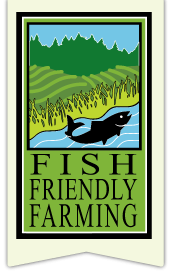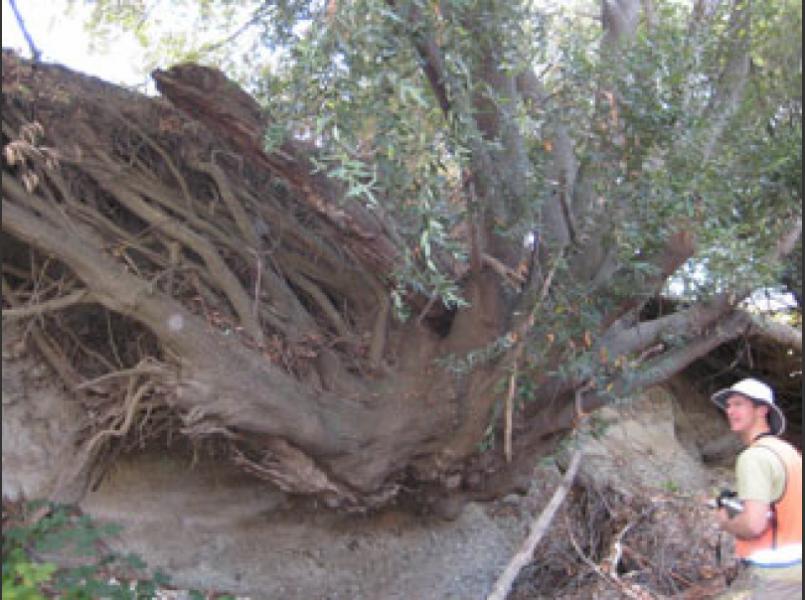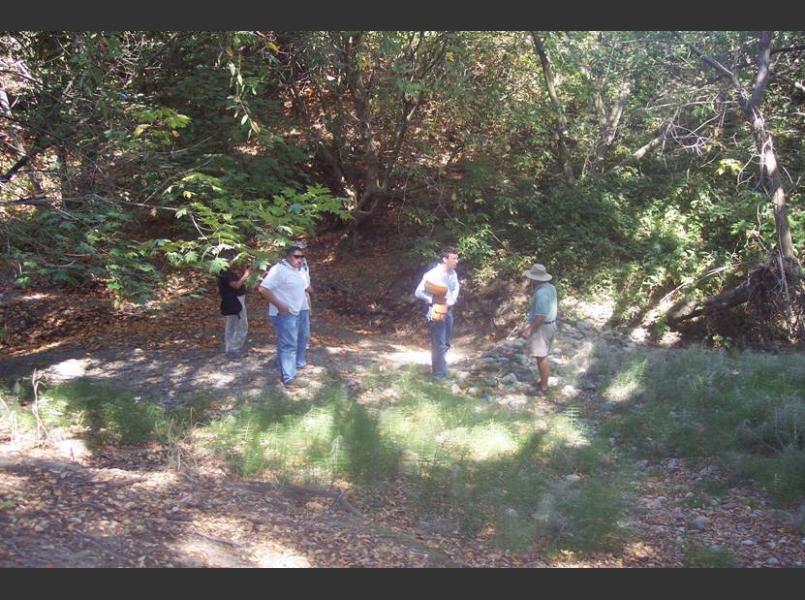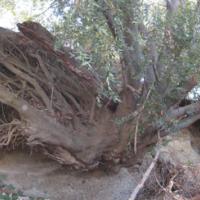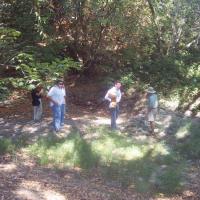Carneros Creek Restoration Project and Adaptive Management Plan
Carneros Creek in southern Napa and Sonoma counties drains a watershed of gently rolling hills. This watershed once held numerous cattle ranches and feedlots. As a result of overgrazing and soil compaction from too many animals, stormwater runoff into Carneros Creek increased, causing channel entrenchment. Carneros Creek has steep vertical banks but in many locations retains large oak and bay trees on the tops of its banks. These trees shade summer pools and keep them cool for rearing steelhead trout. However, most of these trees are undercut, with over half of their roots exposed.
A large number of properties along Carneros Creek are in the Fish Friendly Farming program, including: V. Sattui Winery, Hudson Vineyards, Clos Pegase, Winery Lake Vineyard, Sterling Vineyards, and Cuvaison Vineyards. As part of their Fish Friendly Farming Farm Conservation Plans, an adaptive management plant is required. This plan will study and monitor the creek’s natural dynamics and determine where the banks are most likely to fail and what revegetation actions to take once the bank fails. The vineyard can be moved back in the locations where it would be lost and the creek can adjust its form to become more stable. This Fish Friendly Farming approach represents an alternative to “engineering” the channel by clearing the riparian trees and setting the banks back along a length of creek. This engineered approach can result in a loss of canopy and warming of the creek.
The Carneros Creek Adaptive Management Plan process began in August 2008 and will take about 2 years to complete. The plan is a collaboration between the Fish Friendly Farming program and UC Berkeley. Project funding is provided by the Ecological Restoration Program of the CALFED Bay-Delta Program.
